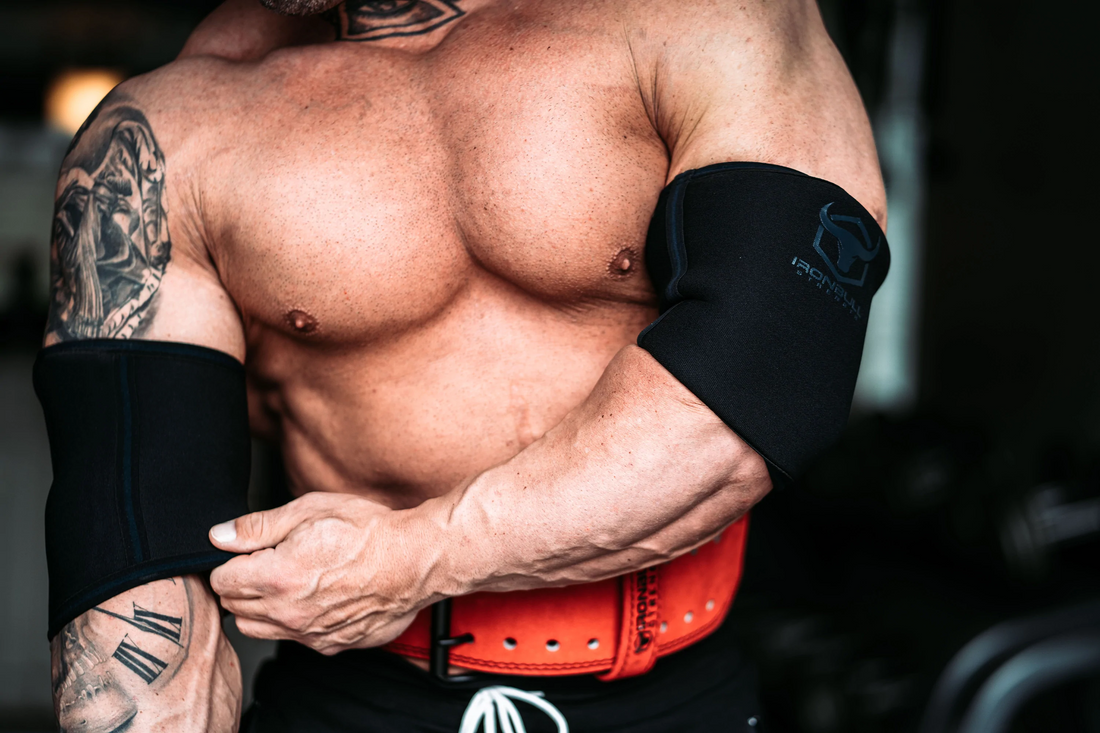
What is Tennis Elbow and the Benefits of Using a Tennis Elbow Brace
Share
What is tennis elbow?
Tennis elbow - known as "lateral epicondylitis" - is pain in the elbow joint.
It usually starts with mild pain or swelling in the elbows and forearms, but can become more painful over time if left untreated.
There are muscles, ligaments and tendons around the elbow joint. Tennis elbow occurs when the tissue around the elbow becomes inflamed from repeated pressure or strain. It often occurs after repetitive actions, such as tapping or hitting a tennis racket.
Despite its name, tennis elbow is the most common laborer. Carpenters, painters, plumbers, typists, musicians, and others who use their hands every day often experience tennis elbow. Athletes such as tennis players, golfers, and baseball players also experience tennis elbow.

Tennis Elbow Symptoms
The main symptom of tennis elbow is elbow pain that usually radiates down the forearm to the wrist and hand.
Pain is often accompanied by swelling or redness due to inflammation of the tendon.
Doctors have found that tennis elbow is degenerative -- when the pain first appears, it's a tendon tear from stress or overuse. When these tears don't heal completely, the pain can get worse or become chronic.
In addition to pain and swelling, tennis elbow often causes elbow soreness and stiffness.
Soreness and stiffness can affect a person's ability to grasp things. For example, those with tennis elbow often report difficulty grabbing a coffee cup or turning a doorknob due to pain and soreness in their hands and forearms.
Treatment for tennis elbow includes:
- Try to avoid activities that aggravate the pain.
- Wear a tennis elbow brace or strap to reduce the burden on the irritated tissue.
- The Arthritis and Injury Care Center offers support options to help relieve this pain, such as the BREG Tennis Elbow Band.
- Gradually stretch and strengthen exercises - these can be given to you by a physical therapist.
How to Choose a Golfer's Elbow Pads
Types of Support for Tennis Elbow
A tennis elbow strap or brace helps keep the muscles in place.
It is usually made of neoprene or other sturdy material and includes a pad to support the muscles of the elbow and forearm.
You can choose from several different types of tennis elbow braces, including:
Epicondylitis Buckle:
An epicondylitis buckle is a wraparound band that applies direct pressure to a strained muscle or tendon. It is designed to wrap around the lateral epicondyle, the bony exterior of the elbow, which helps provide support during movement.
Tennis Elbow Strap:
The Tennis Elbow Band covers the mid-upper forearm and is designed to help absorb some of the pressure placed on this area. Compression also helps hold the muscle in place.
Tennis elbow sleeves:
Tennis elbow compression sleeves provide more coverage and compression than tennis elbow straps. It also supports the muscles of the elbow and forearm during activity and keeps them in place for healing.
All of the above brackets should be tight, but not too close together to provide support for your movements.
Often, laborers or athletes use elbow straps or elbow cuffs in their daily work to prevent tennis elbow pain.
The buckles, shoulder straps and elbow cuffs are all designed to provide elbow support to reduce pain and help you recover faster.
A physical therapist or doctor can advise you on the best tennis elbow brace or strap based on your pain or the type of work you do.
Doctors and physical therapists also recommend stretching and exercises to relieve tennis elbow pain and strengthen the muscles to withstand repeated stress.
prevent tennis elbow
If you have tennis elbow or are experiencing pain, there are a few things you can do to help prevent it from getting worse:
Change the way you move
– If you are doing repetitive movements that are putting extra stress or strain on your wrist or forearm, consider changing your movements. Give your muscles more rest, or change the way you hold things. Most tennis elbows get worse when a torn tendon doesn't have time to heal. Make sure you give yourself time to rest. For athletes, if you experience elbow pain, it may be a sign that you are not in good shape when you hit your tennis racket or golf ball. Have an expert check your form and make sure you're not using oversized or heavy equipment.
Ice after get off work
– Even if you haven’t experienced a lot of pain or discomfort, ice packs are an excellent way to reduce inflammation that hasn’t turned into pain yet. It will help your forearms and elbows recover faster and avoid more serious conditions.
Be the first to wear shoulder straps or elbow pads
– While most people don’t start wearing a tennis elbow brace or strap until they experience tennis elbow pain, if you have a slight hunch that you may be aggravating a tendon or muscle, you can preemptively start wearing a tennis elbow brace to support it during activity your muscles.










